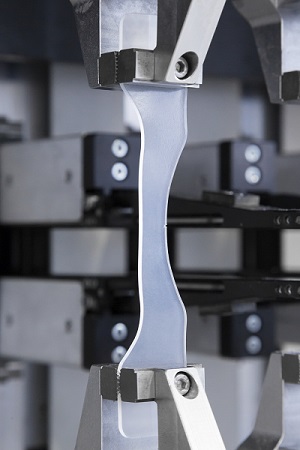The coronavirus pandemic has impacted our lives and work environment in ways we have never experienced before, according to Christian Gimber, Vice President Engineering Silicones at WACKER. “However, the company quickly adopted every measure necessary to keep operations up and running. Our sites have been subject to strict hygiene and distancing rules. We are continuously adjusting regulations on business travel and many of us are working from home to avoid taking risks,” Mr. Gimber relates. Compared with companies in other sectors and given the difficult conditions amid the global Covid-19 pandemic, WACKER has weathered the crisis reasonably well. The company also started an efficiency program called Shape the Future. The aim is to strengthen its competitive edge, make WACKER leaner, faster and more flexible and cut costs significantly.

Mr. Christian Gimber, Vice President Engineering Silicones, WACKER Group
Electromobility, digitalisation and advanced medical applications were major trends in 2020 and will remain in place in 2021. High performance materials such as silicones are important game changers in these industries. For example, silicone based gap fillers have become indispensible thermal interface materials in electric vehicles. They improve heat dissipation and thus ensure an effective thermal management of batteries and electronic components. “Silicones are also used in sophisticated applications such as large instrument-panel displays, restaurant-menu touchscreens, multi-functional sports watches and, above all, in the automotive industry. In every vehicle class, car makers are increasingly turning to ever-larger displays which are increasingly bonded with silicone adhesives due to their stability and resistance to environmental influences,” Mr. Gimber explains. Two experts of the Centre of Electronics Excellence in Seoul were recently awarded WACKER’s Innovation Award for developing novel UV-crosslinkable silicone gels for high-quality non-reflective displays.
The industry will have to deal with rising regulatory requirements in the future. “Let me give you an example: Last year, we developed a new flame-retardant solid silicone rubber which meets the new European fire-safety codes for rolling-stock components. This was a real breakthrough. Fabricators now have a certified compound approved for this new standard. The need to reduce the content of volatile components is another example. In 2016, WACKER was one of the first companies to start an initiative to cut VOC levels in its liquid silicone rubber grades by approx. 90 percent. Our efforts were extremely successful. Since 2019, all LSR grades manufactured at our German sites meet this threshold which redefines industrial standards for liquid silicone rubber globally,” according to Mr. Gimber.

For 2021, WACKER’s focus was and continues to be on high growth sectors such as automotive with electronics and e-mobility as its main drivers as well as the medical industry and energy. These industries are highly innovative and need materials that offer outstanding mechanical properties, can be tailored to specific needs, meet regulatory requirements and enable cost-efficient industrial scale production of components. Silicone is often the material of choice for manufacturers who are juggling with these requirements and wish to find a reliable and competitive solution. For example, WACKER recently developed the first self-adhesive silicone rubber which offers low friction surfaces after curing. This is an advantage for parts such as plugs or connectors which need smooth, but oil-free surfaces for mounting or assembly purposes or even components for food contact applications. Our two-in-one grade is an ideal solution as it is self-bonding, offers low-friction surfaces and enables cost-effective large-scale production of injection-moulded hard/soft composites.
“One of the innovations we will continue to pursue in 2021 are our electroactive silicone laminates. They consist of several ultrathin silicone film layers. Each layer is coated with an electrically conductive material prior to lamination. The result is a flexible electroactive capacitor which changes its size when electrical voltage is applied. This principle can be used in valves, switches, sensor-actor components or in interactive game consoles. We are currently setting up an industrial scale manufacturing line for these laminates and intend to ramp up the facility in 2021,” Mr. Gimber shares. Being the first chemical company to produce silicone films as well as laminates, WACKER will be able to close the existing gap in the supply chain for this innovative technology.
WACKER repeatedly expanded its foothold in several regions. This includes investments in its technical centres and in production facilities in Korea, China and India as well as in Germany where it operates two fully integrated production sites. WACKER global growth strategy remains in place, despite the economic uncertainties the world is currently facing.














